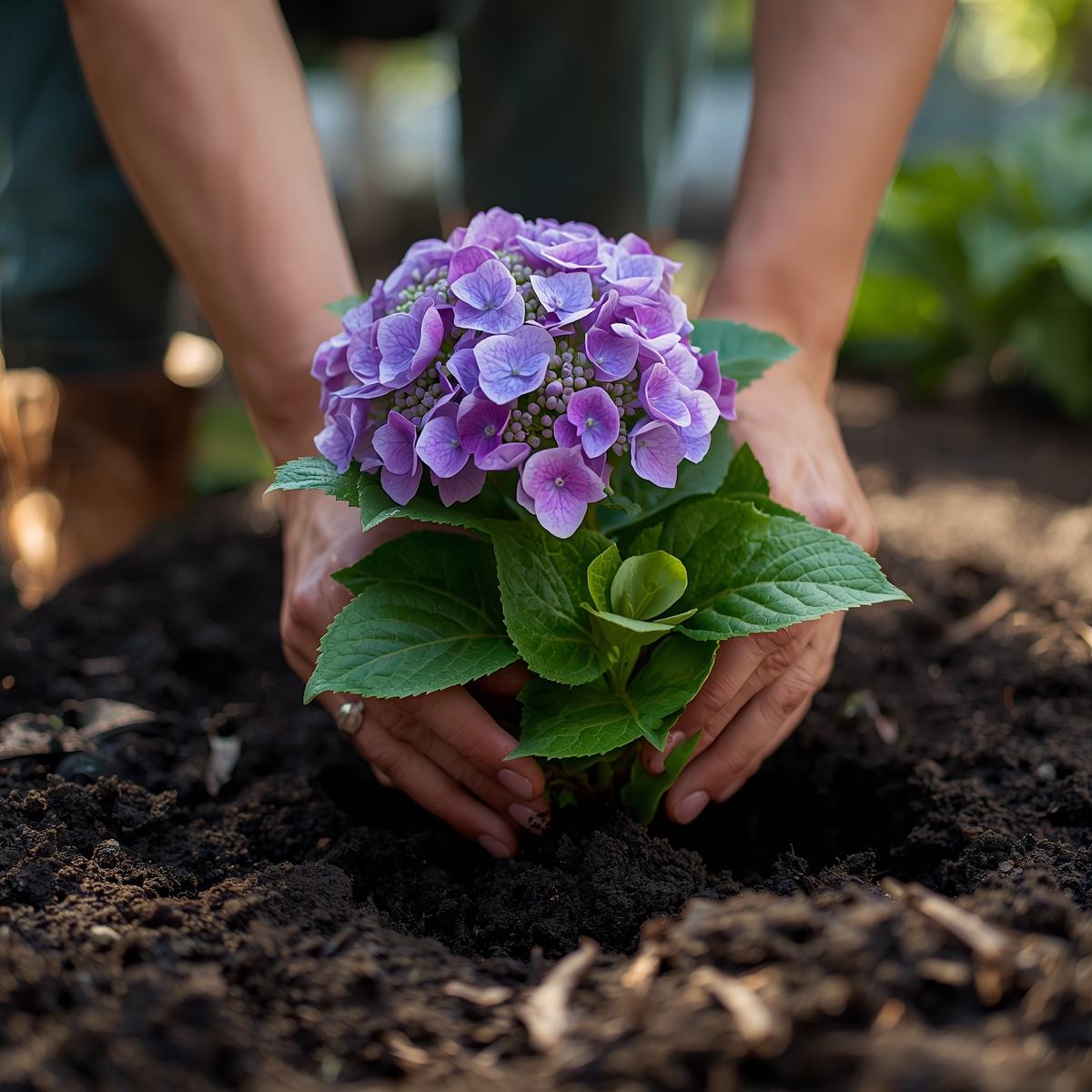Transform your garden with the timeless beauty of hydrangeas — here’s how to do it right!Hydrangeas are one of the most breathtaking flowering shrubs you can grow. With their lush, cloud-like blooms and vibrant colors, they bring elegance and charm to any garden. Whether you live in the United States, United Kingdom, or Canada, learning how to plant hydrangeas the right way can make the difference between a struggling shrub and a show-stopping centerpiece.In this detailed guide, we’ll walk through everything you need to know about planting hydrangeas — from choosing the perfect spot to caring for them year after year. 🌿🌷 Why Hydrangeas Are a Garden FavoriteHydrangeas are loved worldwide for good reason:🌼 Stunning blooms that last from summer through fall.🌿 Variety of colors, from sky blue to rich pink and creamy white.🌞 Adaptable to many climates — great for gardens across North America and Europe.🌺 Perfect for all styles, from classic cottage gardens to modern landscapes.💡 Fun Fact: The name “hydrangea” comes from Greek, meaning “water vessel,” a nod to the plant’s love for moisture.🌸 Step 1: Choose the Right Hydrangea TypeBefore you learn how to plant hydrangeas, it’s essential to pick the variety that suits your garden and climate.🌿 Popular Hydrangea Varieties:Bigleaf Hydrangea (Hydrangea macrophylla):Famous for its pink or blue blooms that change color depending on soil pH.Panicle Hydrangea (Hydrangea paniculata):Hardy and sun-tolerant; blooms start white and fade to pink.Smooth Hydrangea (Hydrangea arborescens):Native to North America — great for colder climates.Oakleaf Hydrangea (Hydrangea quercifolia):Stunning foliage that turns red or bronze in fall.🌸 Tip: Bigleaf hydrangeas thrive best in partial shade, while panicle types can handle more sun.🌞 Step 2: Choose the Perfect LocationHydrangeas love morning sun and afternoon shade. Too much sun can scorch their leaves, while too much shade limits blooms.Ideal conditions:Light: 4–6 hours of morning sunlight.Soil: Rich, well-drained, and slightly moist.pH Level:Acidic soil = Blue flowers 🌊Alkaline soil = Pink flowers 🌸🧪 Soil Hack: Test your soil’s pH with a simple home test kit. Add garden lime for pink blooms or aluminum sulfate for blue!🌿 Step 3: Prepare the Planting AreaDig a hole about 2–3 times wider than the root ball but only as deep.Mix in compost or organic matter to improve drainage and fertility.Make sure the area is free from standing water — hydrangeas dislike soggy roots.🌻 Pro Tip: If your soil is heavy clay, consider planting hydrangeas in raised beds or large containers.🌸 Step 4: How to Plant HydrangeasNow comes the fun part — planting your hydrangea!🪴 Step-by-Step Guide:Gently remove the plant from its nursery pot.Loosen the roots if they appear tight or tangled.Place the hydrangea in the hole so the top of the root ball is level with the soil surface.Fill the hole halfway with soil and water lightly.Fill the rest of the soil, patting it down gently to remove air pockets.Water thoroughly again.💧 Hydration Hint: Hydrangeas love moisture — water them deeply once or twice a week, especially during hot weather.🌿 Step 5: Mulch and MaintainAfter planting, add a 2–3 inch layer of mulch around the base of the plant (but not touching the stem).This helps retain moisture, prevent weeds, and regulate soil temperature.Recommended Mulches:Pine barkCompostLeaf mold🌸 Bonus: Mulch made from pine needles helps keep soil slightly acidic — perfect for blue hydrangeas!🌷 Step 6: Ongoing Care and WateringHydrangeas love consistent moisture but not standing water.🌦️ Watering Tips:Water deeply once a week, more often in heatwaves.Water early in the day to avoid mildew and leaf burn.Drip irrigation or soaker hoses are ideal.🌞 Light and Fertilizer:In spring, use a balanced fertilizer (10-10-10).Avoid high-nitrogen fertilizers — they promote leaves, not blooms.Stop fertilizing in late summer to help the plant prepare for winter.🌺 Step 7: Pruning Hydrangeas — The Right WayPruning depends on the type of hydrangea you have:🌸 Bigleaf & Oakleaf HydrangeasBloom on old wood (last year’s stems).Prune after flowering in late summer.🌿 Panicle & Smooth HydrangeasBloom on new wood (current season’s growth).Prune in early spring before new growth appears.✂️ Pro Tip: Don’t over-prune — you could cut off next year’s blooms!🌼 Step 8: Winter ProtectionIn cold climates like Canada or northern U.S. states, protect your hydrangeas during winter.❄️ Winter Care Tips:Add a thick layer of mulch (4–6 inches) around the base.Wrap the plant in burlap or use a frost cover.Avoid pruning too late in fall — it can expose tender buds to frost.🌸 Common Problems (and How to Fix Them)🚫 Problem: Wilting LeavesCause: Too much sun or dry soil.✅ Fix: Water deeply and provide partial shade.🍂 Problem: Yellow LeavesCause: Poor drainage or iron deficiency.✅ Fix: Check soil pH and drainage; add compost.🌧️ Problem: No BloomsCause: Incorrect pruning or harsh winter damage.✅ Fix: Identify hydrangea type and adjust pruning time.🌿 Bonus: Design Ideas with Hydrangeas🌸 Cottage Garden Look: Pair hydrangeas with roses, lavender, and foxgloves.🌿 Modern Landscape: Mix white panicle hydrangeas with ornamental grasses.🌷 Container Beauty: Dwarf hydrangeas look stunning on patios and balconies.💐 Aesthetic Tip: Plant hydrangeas near entryways or fences — they make any space instantly more inviting!🌺 Conclusion: Unbelievable How to Plant Hydrangeas!Now that you know how to plant hydrangeas, you’re ready to fill your garden with lush blooms and timeless elegance. 🌸From choosing the right variety to perfecting soil and pruning, every step helps your hydrangeas flourish beautifully year after year. Whether you dream of pastel blue blossoms in a shaded corner or giant pink clusters along your garden path, hydrangeas bring a touch of magic wherever they grow.So grab your gardening gloves and dig in — because your unbelievable hydrangea garden awaits! 🌷🌿🌞SEO Keywords: how to plant hydrangeas, hydrangea planting guide, best way to plant hydrangeas, hydrangea care tips, growing hydrangeas at home, hydrangea varieties, planting flowers in garden, garden care for beginners.

